Evergreen Tree Varieties – Learn About Common Types Of Evergreen Trees
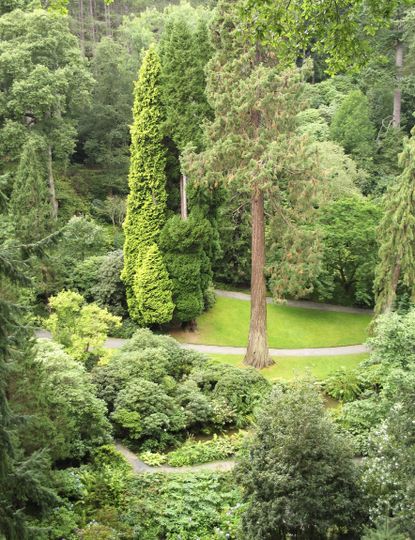

Evergreen trees and shrubs retain their foliage and remain green year-round. However, not all evergreens are the same. By distinguishing common evergreen tree varieties, it will be easier to find one that fits your particular landscape needs.
Evergreen Trees for Landscaping
Most evergreen trees are needle-bearing while evergreen shrubs also include broadleaf varieties. In addition, their growing characteristics vary greatly among species. Therefore, it's important to recognize the differences between them before adding these plants to the landscape. Needled evergreen trees make great additions to the landscape, especially when scattered amongst other plantings. They have an extraordinary range of shapes and sizes and are well adapted to many soil types and growing conditions. That said, some evergreen tree varieties thrive better in certain locations and temperatures than others. The most preferred use of these trees is for ornamental purposes. However, some varieties can offer suitable shade or screening too. Distinguishing the differences between popular evergreen trees will make it easier to find a suitable tree that not only fits your particular landscape needs but also serves its intended purpose.
Types of Evergreen Trees
Pine Trees
Pines are probably the most notable of evergreen tree types. While most of them have long, needle-like foliage and are cone-bearing, not all pine trees are the same. Each has its own unique characteristics to contribute. Some of the most common varieties include: Eastern White Pine (Pinus strobus) – this fast-growing species reaches 80 feet (24.5 m.) or more. It makes an ideal choice for use as a specimen planting or for screening and shade. Pinyon Pine (P. edulis) – This is one of the slow-growing pines, reaching only 12-15 feet (3.5-4.5 m.) in height. It is a great tree for growing in pots, rock gardens, and shrub borders. Monterey Pine (P. radiata) – this evergreen tree grows quickly and reaches anywhere from 80-100 feet (24.5-30.5 m.) tall without pruning. It’s considered a finicky pine and not tolerant of arid conditions or cool temperatures. Allepo or Mediterranean Pine (P. halepensis) – unlike Monterey, this pine tree thrives in poor soils and drought-like conditions. It also tolerates heat and windy conditions. It’s a fast-growing tree between 30-60 feet (9-18.5 m.). Red Pine (P. resinosa) – this tree has interesting reddish-colored bark. The Japanese red (P. densiflora) variety is an excellent slow-growing pine suitable for small areas. Japanese Black Pine (P. thunberglana) – this pine has unusually dark gray to black bark. While it is a fast grower, reaching up to 60 feet (18.5 m.), it easily accepts pruning. In fact, it is oftentimes used as a popular bonsai specimen for pots. Scots or Scotch Pine (P. sylvestris) – it may not always be well adapted to landscape settings but is commonly used as a container plant or Christmas tree for its interesting yellow to blue-green foliage color.
Spruce Trees
Spruce trees, with their attractive short needles and hanging cones, also make excellent additions to the landscape. Popular choices here include the following: Norway Spruce (Picea abies) – this tree grows up to 60 feet (18.5 m.), has attractive dark green foliage on drooping branches, and produces decorative, purplish-red cones. It enjoys cool conditions and makes an excellent choice for windbreaks or specimen plantings on large properties. Colorado Blue Spruce (P. pungens glauca) – blue spruce is another tall grower at 60 feet (18.5 m.). This specimen tree is popular for its pyramidal shape and blue-gray foliage color. White Spruce (P. glauca) – this is a pale green species of spruce. The dwarf variety (Alberta) is commonly found growing in pots or as border and foundation plantings. It has feathery needles and is available in pyramidal or columnar shapes.
Fir Trees
Fir trees make useful specimen plantings and have erect cones. Some of the most commonly planted firs include: White Fir (Abies concolor) – this fir tree has soft, gray-green to silvery blue-green foliage. It makes a lovely contrast with dark-colored evergreens. This species grows between 35-50 feet (10.5-15 m.). Douglas Fir (Pseudotsuga menziesii) – this is an attractive, fast-growing evergreen tree that gets quite large, about 50-80 feet (15-24.5 m.) tall. It's great for use as specimens, screening, or group plantings. It also makes an ideal Christmas tree. Fraser Fir (A. fraseri) – the Frazer fir has a narrow pyramidal shape and grows up to 40 feet (12 m.). It, too, makes an excellent choice for Christmas or placed in the landscape as border specimens or container plants.
Other Evergreen Trees
Other interesting evergreen trees include cedar, thuja, and cypress. Each of these trees offers its own unique qualities too. Cedar (Cedrus spp.) – cedar tree varieties make elegant specimen plantings. Most have clustered needles with small erect cones. They grow anywhere from 30-60 feet (9-18.5 m.) with dwarf types available. Thuja – also known as arborvitae, is a commonly seen accent among many landscapes, either as a foundation planting or screening. This evergreen has shiny, scale-like leaves and reaches up to 40 feet (12 m.). Cypress (Cupressus spp.) – cypress trees have a soft, feather-like texture and symmetrical shape. They are most often used in creating privacy hedges and borders. Favorites include Arizona (C. arizonica) and Leyland (Cupressocyparis leylandii). Evergreen trees make excellent choices for the landscape. They provide year-round interest, shade, and screening. Yet, not all evergreen tree types are the same, so you'll have to do your homework in order to find just the right one for your landscaping needs.
Gardening tips, videos, info and more delivered right to your inbox!
Sign up for the Gardening Know How newsletter today and receive a free download of our DIY eBook "Bring Your Garden Indoors: 13 DIY Projects For Fall And Winter".

Nikki Tilley has been gardening for nearly three decades. The former Senior Editor and Archivist of Gardening Know How, Nikki has also authored six gardening books.
-
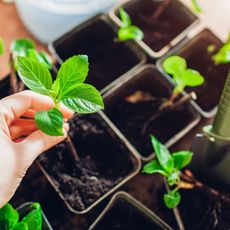 Plants To Propagate In Winter: 6 Of The Best Options For Cultivating Winter Cuttings
Plants To Propagate In Winter: 6 Of The Best Options For Cultivating Winter CuttingsWe usually associate propagation with spring, but there are a few plants you can grow from cuttings in cold months. We round up the best plants to propagate in winter
By Mary Ellen Ellis
-
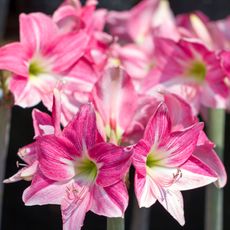 Try These 8 Pink Amaryllis Varieties That Look Stunning Indoors And Out
Try These 8 Pink Amaryllis Varieties That Look Stunning Indoors And OutWhile not quite as prevalent as the traditional red flowering type, the pink amaryllis is a beautiful addition to the home – and here are eight of the best
By Bonnie L. Grant
-
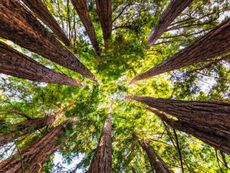 Best Trees For Carbon Sequestration And Climate Change
Best Trees For Carbon Sequestration And Climate ChangeLet’s keep planting trees. They are our best bet for capturing carbon and may help with our global warming issues.
By Teo Spengler
-
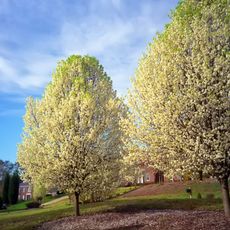 7 Invasive Trees You Should Never Plant In Your Yard Or Garden
7 Invasive Trees You Should Never Plant In Your Yard Or GardenWhat are some invasive trees you should never plant in your yard? Click here to find out.
By Teo Spengler
-
 How Close Can You Plant A Tree To A Stump?
How Close Can You Plant A Tree To A Stump?Looking to plant new trees near old stumps or where stumps have been removed? Click here to learn how.
By Teo Spengler
-
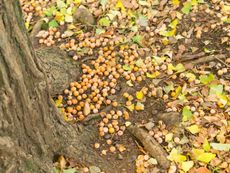 Messiest Trees That Drop Debris Everywhere
Messiest Trees That Drop Debris EverywhereWant to know which trees will create the biggest messes in your home landscape? Click here to find out.
By Amy Grant
-
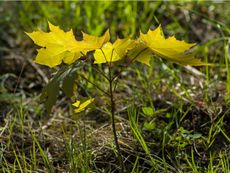 How To Get Rid Of Tree Sprouts In The Yard From Nearby Trees
How To Get Rid Of Tree Sprouts In The Yard From Nearby TreesLearn the simple way to keep pesky tree seedlings in your lawn from becoming saplings.
By Teo Spengler
-
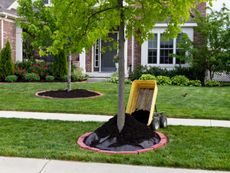 7 Common Tree Care Mistakes That Kill Trees
7 Common Tree Care Mistakes That Kill TreesAre you accidentally killing your tree? It's easier than you think, if you're committing one of these common mistakes. Click here for more.
By Teo Spengler
-
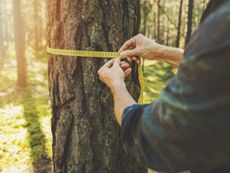 How To Tell How Old A Tree Is
How To Tell How Old A Tree IsEver wondered how to calculate the age of a tree? Click here to learn all about it.
By Teo Spengler
-
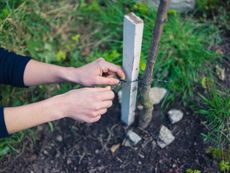 When To Remove Tree Stakes From Saplings
When To Remove Tree Stakes From SaplingsA newly planted tree may grow strong when it’s staked, but don’t forget to remove the stakes when it’s stable.
By Teo Spengler